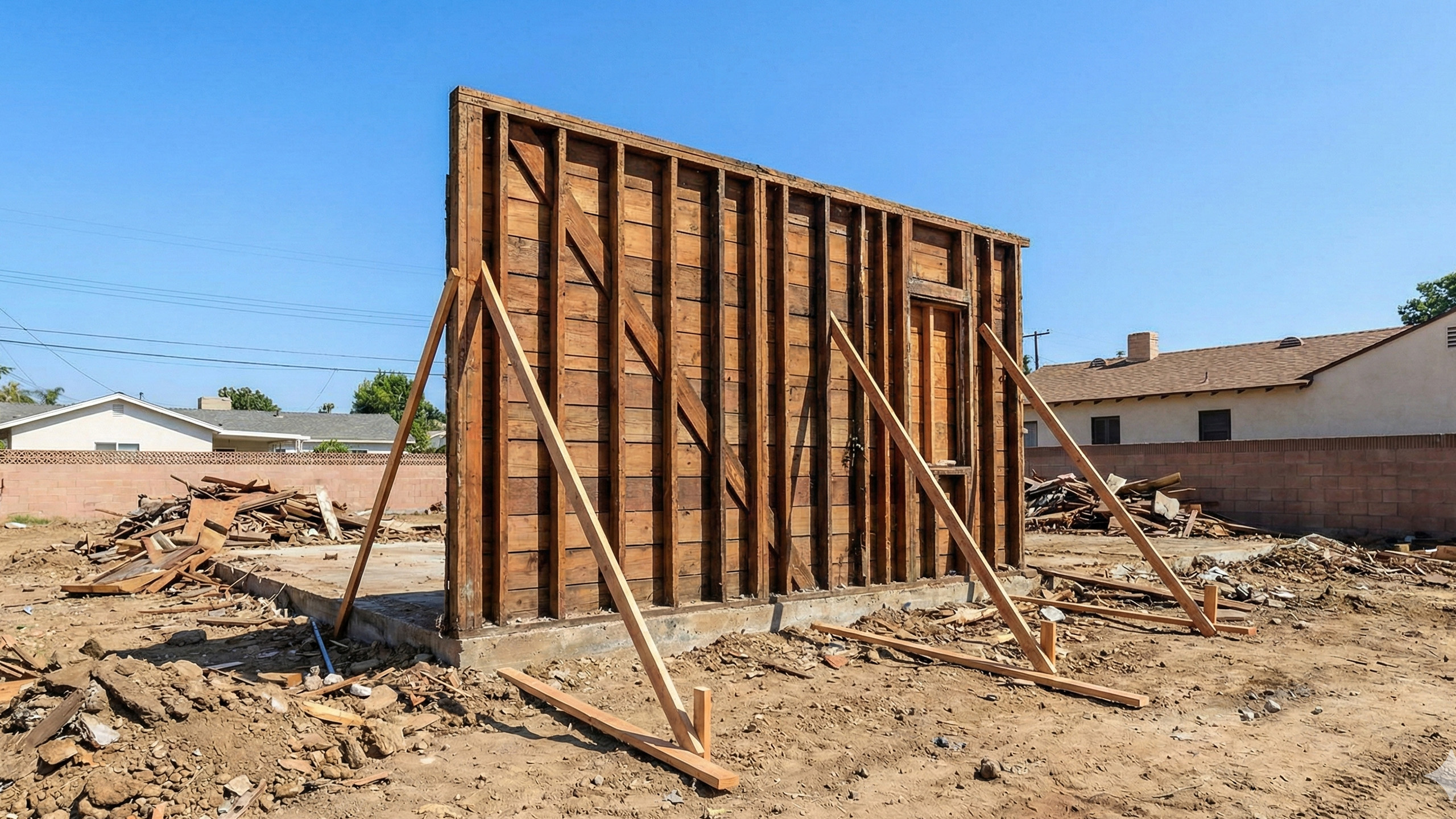What Remodeling Entails
Remodeling is the process of altering or adding to an existing property. If you choose to remodel your current home, you’ll be changing the original design to reflect your desired aesthetics and accommodate your practical goals. This can be as simple as upgrading some interior elements or adding additional rooms onto your home’s perimeter. It can also be as complex as completely remapping and expanding your old floor plan. Finishes and fixtures can be swapped out, new features added, and a whole new look achieved.
The Benefits of Remodeling
Choosing to renovate can be a very efficient way of achieving the ideal home if your property has a good foundation to start with. Should the project go smoothly, you can spend far less money than you would purchasing or building a new property. Since you do not need to worry about finding new real estate, making a purchase, or arranging the sale of your old home, there’s usually less work involved as well. Finally, remodeling is the more environmentally friendly route, as it requires less labor and material overall.
Remodeling is a wise choice if you can see yourself being satisfied with your home after making some changes that are realistically achievable. You’ll be able to preserve the memories made in your home while giving it a fresh new look.
There may also be perks relating to your home’s location. Do you enjoy your current plot of land? Is it close to work, amenities, and your social network? Is keeping a home in your neighborhood a promising investment? If your answer to these questions is “yes”, then it’s likely you’ll benefit from upgrading your existing home with a remodel.
The Drawbacks of Remodeling
Unfortunately, there are also a few drawbacks to remodeling. You’ll need to carefully consider these before deciding to pursue renovation over a new build.
- Design Limitations
Remodeling requires working off of the old bones of your house. This can limit things like room sizes and ceiling heights if you are aiming to keep the majority of the existing home’s structure.
- Surprise Repairs
Working off of those old bones also comes with risk. An aged home is one that is likely to have some problems, even if they aren’t visible at the surface. Knocking out some drywall or flooring may reveal damage that has to be dealt with before the rest of the remodel can progress, and that can easily rake up costs. Major structural problems such as foundation failure are a common cause of remodel budget blowouts.
- Life Disruption
Being able to stay in your home is often touted as a benefit of remodeling, but it more often than not is actually a major drawback. Having workers coming in and out of your home is disruptive and often uncomfortable, as it sacrifices your privacy. All of that hammering and sawing can get loud, and dust is inevitable. Plus, you’ll end up without access to certain rooms while they’re being worked on, which can be troublesome when it comes to essential areas like bathrooms and kitchens.
Many teams will assure that you can live with these disruptions, but the stressful reality of living in a renovation environment makes it far more likely you’ll need to move out during construction. The stress that results from living in a home that’s being renovated puts tension on family and relationships, and ultimately isn’t worth the cost savings that may result. On top of that, the project is likely to take longer if workers need to work around you, both physically and in terms of working hours.
- Same Location
If your current property and its location doesn’t quite fit your needs, a remodel is never going to be able to change that.
- Red Tape
If your home is governed by strict regulations when it comes to remodeling, then you may have a lot of difficulty getting the approvals you need. This can be the case if your house has a historic designation given by the city, if it is part of a HOA community, or it is in a zone where special rules apply (such as the coastline).
Pursuing a Completely New Build
Building new is starting from scratch - with a new plot of land and a floor plan that has been custom created by an architect. You’ll need to find a piece of real estate that can accommodate your desired build, then oversee the complete design and building process. This typically takes the better part of 2 years, depending on various factors such as the approvals and permits that need to be secured, your funding, market options, material availability, and your decisiveness in design. Expect about 9 months or more for design and permitting, and a year or longer to carry out construction.
The Benefits of Building New
Maximum freedom is the main benefit of building a home from the ground up. You will not be limited by any existing floor plan or features, and you can even choose a piece of land that has the exact topography needed to support your design vision. You’ll have the opportunity to orient your layout in a way that takes full advantage of scenic views and any other noteworthy elements of your land.
Building new is also appealing to those who want peace of mind regarding the condition of their home. You’ll be able to rest assured that everything in your home is built with new, modern materials, chosen for quality and performance. This will minimize maintenance concerns, ensuring that you needn’t worry about replacing certain installations for years or even decades to come.
Ultimately, building your own home gives a sense of accomplishment that can’t be matched. It’s a project you pour your heart and soul into, resulting in a completely unique build that has “you” reflected in every design decision. Many homeowners who have chosen to build new feel an intensely personal connection to their home, and immense pride in realizing their vision.
The Drawbacks of Building New
Though building new offers a lot to be excited about, there are also some drawbacks that may make it the wrong choice for your project.
- Real Estate Hunting & Selling
Before you can build, you’ll need to have identified and purchased a plot that perfectly suits your intended design. This can be a lot harder and more time intensive than it seems. You’ll need your architect to evaluate any land you’re considering in order to avoid buying something that won’t actually work.
Also: if you currently own a home and are planning to fund your new build with the proceeds of its sale, you’ll need to find a buyer first. Should your current home not be market-ready, you could be looking at extra investments and time just to make it sellable.
- Higher Costs
Buying new land and building a complete home will require much more of an investment than just remodeling. You’ll need to closely assess your financial capabilities before you commit to this big of an expense.
- Possibility of a Longer Timeframe
Even without including the search and purchase of a new plot, the timeline for building a new home can be longer than remodeling. If you’re not okay with waiting almost 2 years (or more!) until your project is complete, then building new may be too much of an undertaking.
- Living in Limbo
Part of the reason many people struggle with the longer timeframe of a new build is that they are waiting in temporary accommodations. Unless you’re planning to stay in your current home while building takes place, you’ll need to rent temporary housing. This can be quite disruptive for families with children, or households that require a more thoughtful design to properly accommodate their lifestyle.
- Red Tape
Remodels aren’t the only ones subject to strict regulations. You may find that the ideal location for your dream home can’t accommodate your vision due to local codes and permitting requirements.
Find Your Project’s Perfect Path with Letter Four
Deciding which direction to go in takes a lot of thought and investigation - sometimes more than the average person can handle on their own. Often it takes expert guidance to fully understand the scope of work, budget, and suitability for your design goals. We offer this guidance in our Project Planning Pack, a guide geared towards helping homeowners like you understand how best to approach designing and building their dream homes.
As masters in both major renovations and new construction, the Letter Four team can help you inform yourself of each option’s pros and cons, and discover which best fits your needs. We use our Project Action Plans to explore your design vision, make price estimates, and lay preliminary plans that will give a clear picture of your project’s scale. Book a call today to find what works best for you.






.svg)























.png)